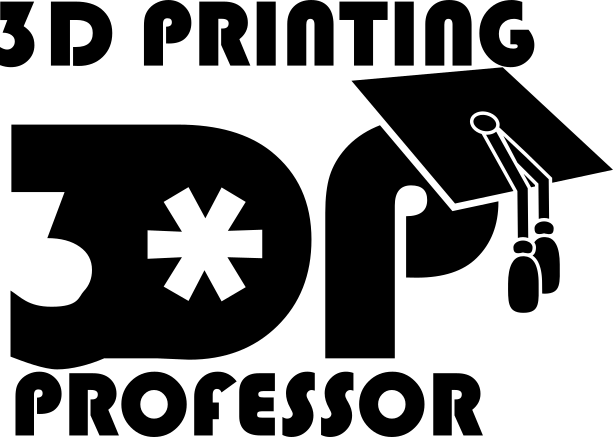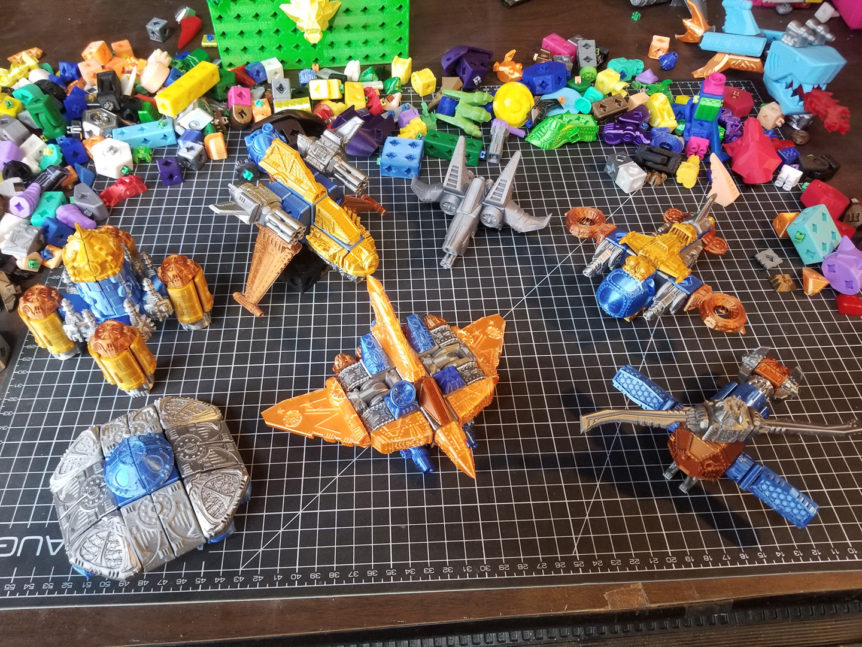TL;DR: Now that this kickstarter is done, instead of prepping for another kickstarter in a year or less, I will be developing further PrintABlok sets for my Patreon backers on a monthly basis. Sign up there to get future PrintABlok sets. But more on that later.
EDIT: I decided to go ahead and try to gather some data to answer the questions in this writeup.
Starting at the End
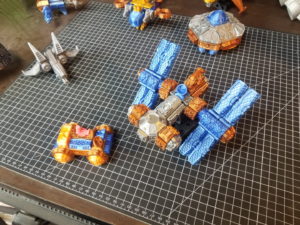 As I write this, I have just delivered to my kickstarter backers the final set of rewards for the PrintABlok Skyforce kickstarter, and with it came a great sense of accomplishment. However, this isn’t as much an ending as a new beginning, because this kickstarter may mark the end of kickstarters for me, if all things go well.
As I write this, I have just delivered to my kickstarter backers the final set of rewards for the PrintABlok Skyforce kickstarter, and with it came a great sense of accomplishment. However, this isn’t as much an ending as a new beginning, because this kickstarter may mark the end of kickstarters for me, if all things go well.
But I’m getting ahead of myself. These post-mortems have a format I need to stick to. So let’s post this mortem.
What Went Well
I ran this campaign a little different than previous campaigns. Instead of a full 30 day run, I went for a 14 day sprint. And if I’m being honest, that’s kind of amazing to me. This went by so fast, and yet it feels like I’ve been in this mode forever. And it feels like I could be doing this forever after this. It’s a weird feeling.
So why did I only run this campaign for 14 days? My reasons for this were multiple:
Eliminating the sleepy middle
Most of my past campaigns have a strong beginning, a bit of an uptick at the end, and long sleepy period in the middle. My hope was that I could bring the two good parts closer, and eliminate the less good parts. And I would say that looking over the campaign, that was the case. There wasn’t a single day on the campaign that didn’t have some kind of positive progress.
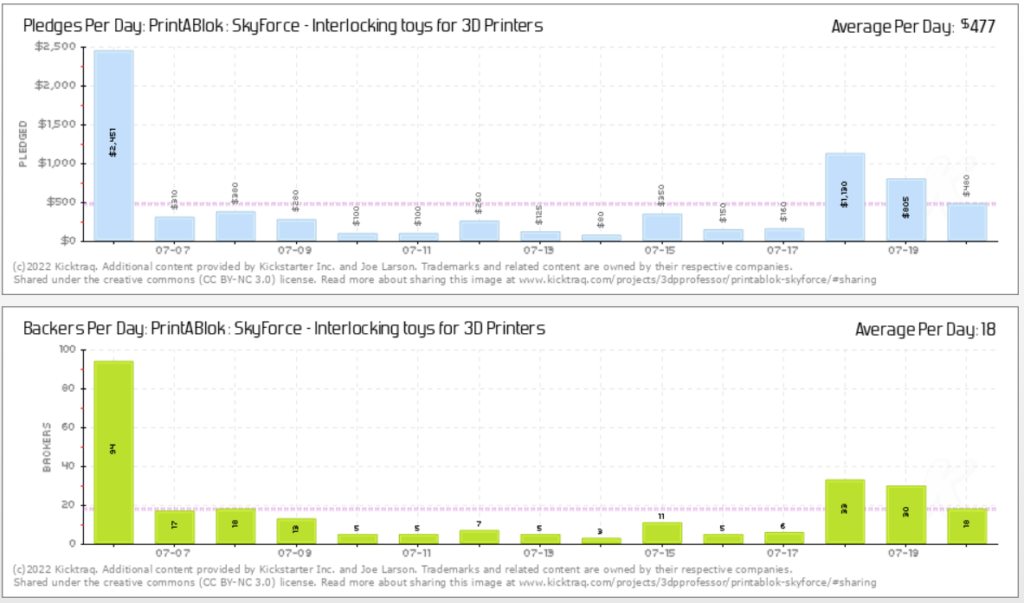 The daily average was nearly twice as much as previous campaigns, and the total amount raised was comparable. Over all, I don’t think anything was lost by this campaign only being 14 days.
The daily average was nearly twice as much as previous campaigns, and the total amount raised was comparable. Over all, I don’t think anything was lost by this campaign only being 14 days.
Of course the question is “Could it have made more if it had gone on longer”, and I think the answer is a definite “maybe”. But I don’t think it would have raised that much more. I could be wrong, and quite frankly there’s no way to know for sure. But there were other benefits to this shorter run.
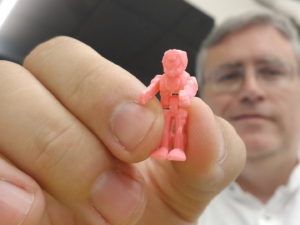 Avoiding burnout
Avoiding burnout
Running a campaign like this is exhausting. At the end of my previous campaigns I just wanted to close Blender and never look at another printablok again while I hibernate for a month. But with this campaign, I still feel like I could keep going. This shorter campaign managed to avoid burnout while remaining productive and may have even kick started even more printablok development! So super kudos to the 14 day campaign.
More Satisfying for Backers
I don’t have any hard data to back this up, but it feels obvious to me that someone who gets their reward in a little over two weeks from when they gave me their pledge will be happier than someone who has to wait more than twice as long. Then again, maybe I’m underestimating the value of antici…. Pation. But I’m gonna go with the assumption that everyone is happier with a shorter campaign.
This Little One Track Mind of Mine
I wasn’t really sure where this section should go, but I thought it needed to be said: I don’t multitask well. I don’t work on multiple videos at the same time. I record, then edit, then release, then record the next one. And so when this campaign started I had to be in all in on the campaign. I knew going in that my YouTube channel was going to be neglected. Heck, my lawn has been neglected during this campaign.
This it just about focus. It’s also about bandwidth. Even someone who can multitask only has a limited number of hours in a day. That’s why modeling livestreams and streaming my modeling process on public forums like Makerdeck were a good idea to double-dip my time.
And now I kina would like to make regular Wednesdays livestreams a thing going forward.
A Satisfyingly, almost overwhelming, pile of rewards
The set of rewards for this campaign was also something I was generally happy with, though I could argue I might have over delivered again, just a little. In the beasts campaign I way over delivered on the rewards, considering what it raised. And I worry that one reason not a lot of Beasts are being printed by people is because there’s just way too many of them. So I worry that campaign was also a little too generous and will create a reward pile that was just on that edge of overwhelming. But we’ll see. If people are printing them and sharing their prints online, then I would consider this a success.
And yet, this brings up the question of how much is too much? And just like the 14 day proved less can sometimes be just as good, perhaps there’s another way to deliver rewards without overwhelming people. More on that later.
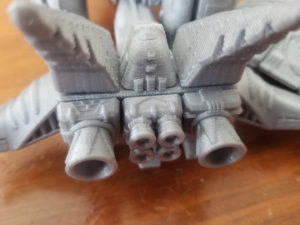 Greebles!
Greebles!
With this set of models I gave myself permission to go hog wild with the details. That meant I would be spending a lot more time on each piece and some of the details might not even print on some 3D printers. But it also meant that the models look so much better than they did in the past. I feel like even if these details aren’t seen, they’re felt.
Freebies
I held off releasing the Articulated generic PrintABloks made for the Beasts until just before this campaign. As well, I designed and released some PrintABlok calibration cubes and released them just in time to hopefully generate more buzz. Did these blocks introduce anyone to the campaign who wouldn’t have otherwise heard about it?
I should make a survey to answer that.
What could have been done better
Of course there’s always a thorn on every rose, and this kickstarter was no exception.
No time to explain
In past kickstarters there was tons of back-and-forth with backers. Polls every step of the way. Livestreams. Feedback.
But in this campaign the short duration combined with the increased detail of the models meant I had to pre-model much of the rewards in the lead up to the campaign, leaving less to interact with backers about.
How bad this was, though, I’m not really sure. Having more models before the campaign came out gave me the opportunity to come up with some unique marketing before the campaign.
So in the end, did anyone miss the interaction that much? It was certainly a selling point of the Low Poly Dinos, but in the end, I don’t feel like it was missed.
And it’s not like I wasn’t interacting with my backers. There was weekly live stream, twitter, facebook, instagram, streaming my modeling process on MakerDeck. and frequent enough posts on the kickstarter, though not a lot of comments on the campaign or those posts. It’s like the campaign was all business. I know my part, your part is to receive, lets do this. It was just so devoid of that manic energy of previous campaigns. In the end was that a bad thing? I’m not sure. But it was different.
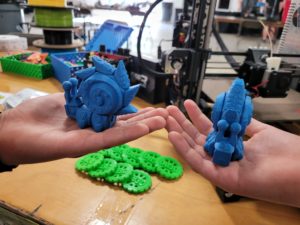 Why can’t I get anyone to boost my signal?
Why can’t I get anyone to boost my signal?
Okay, that’s a provocative heading, and not actually true. Both Filament Stories and Bryan Vines gave the campaign a great boost. They really went above and beyond in making dedicated videos for this campaign. Honestly, all I was hoping for a few twitter posts or something. This was more than I could have asked for.
But one thing I keep saying in past campaigns is that I need to get these models in the hands of people to promote them for me, and I really tried this time. I sent out the pre-kickstarter STLs to everyone I could think of. I even made printed sets and had them passed out at MRRF, even though I couldn’t attend myself. I did everything I could, and yet it feels like the returns were underwhelming, generally. I feel like marketing is something I really need to put a few more stat points into.
What’s happening with YouTube?
This could be a whole post, a whole video, a whole discussion unto itself, but I’ll keep it short. My YouTube channel is somewhat floundering. Videos aren’t getting the views they used to. In fact a lot of people are seeing the same thing, most likely stemming from YouTube messing with the algorithm for reasons that aren’t entirely clear. But whatever the reason is, I feel my YouTube reach is slipping.
YouTube has been a major reason for the success of my past kickstarters. I know that many people are backing me, not the project.
Except, maybe not as much now that I have PrintABlok and it’s reached the level of maturity it has. I feel like PrintABlok, more than things I’ve done in the past, is an idea that people are willing to back on it’s own. It’s a good product that fits a need.
Do I still need to cultivate my YouTube? I don’t know. Again, I should make a survey and get some data before drawing any conclusions.
No clear Stretch Goals
Here’s the list of excuses reasons why I didn’t start this campaign with clear stretch goals listed:
- Stretch goals were always a strange thing in previous campaigns
- I always felt like the amount of work I had to do didn’t match the stretch goal levels
- This campaign started with with a larger starting set than sets in the past
- Does a stretch goal really motivate people? And how?
- These models with their highly detailed looks take a lot longer to make
- The $100 “you’re the boss” backers generally give me enough to work on, especially at the start of a campaign
So my plan was to just watch the campaign, keep an eye on my work load, and when I had a feel for where the campaign was heading and my available bandwidth, figure out and announce some stretch goals. And that’s what I did.
However, now that I’ve had a chance to really think about it, and with the benefit of hindsight, I realize I could have handled that differently. I think part of my problem is that the $500 “goal” of these campaigns is completely made up. I could deliver if only 1 person wanted these kits, though it would hardly be worth my time to do so. But if I were being honest about my time, this campaign should have started at $2000. Except what would be the sense in that? I already put in the time!
It would have taken a galaxy brain to figure this before hand, but I could have:
- Set the goal at $500 (or $100, it doesn’t matter)
- Only put 3 of the developed models in that initial goal (feels a bit dishonest, but perhaps I could be honest about what I’m doing)
- Realizing that the $100 backers will probably keep me busy for what would otherwise be a couple of stretch goals, use the 2 withheld sets as faux stretch goals, at, say $2000 and $4000.
- At $6000 we have the first real stretch goal that general backers get to vote on
I think I didn’t do this because with a $500 goal, it felt like the first stretch goal should be $1000. However, the math just doesn’t support that. Plus there was the question of “what if we don’t make it to the first stretch goal, even? What do I do with these models I’ve already made?” The answer, of course, is “Put them up on your site and sell them separately.”
Lessons Learned
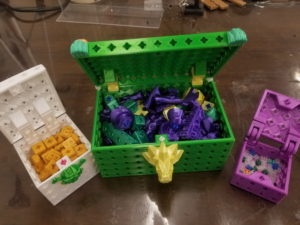 It’s funny looking at my past post-mortems, because I’ve actually done a pretty good job of incorporating those lessons. So I’m going to steal some bullet points from them and make a cumulative lessons learned list:
It’s funny looking at my past post-mortems, because I’ve actually done a pretty good job of incorporating those lessons. So I’m going to steal some bullet points from them and make a cumulative lessons learned list:
- It’s the people who back that made this successful, and never lose sight or stop communicating with them.
- Keep the reward tiers simple. $10 gets everything, a tier for the old stuff, and $100 special tier.
- Digital-only distribution is the way to go.
- Plan out when to start and, in particular, when the kickstarter will end.
- I’m not the best at business, so I need to get better or get help.
- Figure out stretch goals that are where I really want to be and fair to my time
- Lead into the kickstarter with:
- a domain that points to a landing page
- A few starter models
- Get the starter models in the hands of influencers
- Get printed sets in the hands of big influencers (Could have done this better)
- Clear the calendar
- Prepare video content to release along the way (This too could have been improved on)
- During the campaign:
- Keep it short. 14 days is good
- Emulate the look and design of successful kickstarters in the same space (oops)
- Frequent and regular livestreams
- Have a freebie to release at the mid-way point (I released them early)
- After the campaign
- Digital delivery as soon as possible with a store listing (nailed it!)
But will there even be a next campaign?
Usually these kickstarter post-mortems serve as a checklist that I hold on to for my own information in my drafts folder until it’s time to start the next campaign. And then I’ll publish just before the next campaign to help others who might run their own campaign, as well as generate buzz for the new campaign. But I’m hitting publish on this one now because something interesting happened just before the Skyforce kickstarter began.
Remember I mentioned Filament Stories? She released a video before the campaign telling people about the AirWing model which I released for free before the campaign. As a result of that video, that day I had 7 new signups… to my Patreon. Filament stories appeals to a different audience that I do, and that audience apparently expects to get 3d models through Patreon, not kickstarter. And that’s funny because when I started my patreon, my plan was to release models regularly through patreon. I dropped that because well, there were a lot of reasons. I didn’t feel like I had anything anyone wanted regularly, but with PritntABlok now I do. Most people wanted me to do videos, so that’s where I put my time, and the 3D modeling thing kinda went by the wayside.
However, with those new Patreon backers I suddenly could see a new future where that initial plan could finally be a reality. But I still have a few questions to answer:
Can I make this work with my schedule?
As I mentioned before, I don’t multitask. If I’m working on models, I’m not working on videos. Something’s gotta give.
I discovered during this campaign that it takes about a week to make, test, and publish one model kit. So one week a month I’m putting aside videos and other things and working on a model kit, and the other 3 weeks I can work on videos or whatever else.
I think I can do that.
Could this be as profitable as doing kickstarters?
I don’t want to weigh this down with unfiltered reality, but I really do rely on the money raised from these kickstarters. That couple thousand a year bridges the gap between what I make at my day job, and what I need to support my family. If it weren’t for these kickstarters, I would have to get a real job and probably quit YouTube to do it.
In order for Patreon to match that, it would have to be bringing in $600 a month. Is that possible when my only offering is the most innovative new toy for 3D printers ever? Well, we’re gonna find out.
Of course if I can surpass that, then this revenue stream might be on it’s way to being my only revenue stream. How great would that be?
Benefits for my Patrons
Of course, it’s not just about me. One thing about these kickstarters that’s always occurred to me is that receiving a big zip of files is kind of overwhelming. But a small zip of files once a month would be much more reasonable. This could be a win-win.
The Plan
- Focus on producing content for the Patreon, promising “regular” model releases
- For 3 Months produce a new model kit every month and deliver it to anyone backing at the $3 or more
- After the 3 months, if the Patreon isn’t brining in $600 a month, “regular releases” become every other month and I start planning the next kickstarter (but hopefully we can skip this step)
- When Patreon is brining in $600, monthly releases become the norm
- Then, if Patreon ever reaches $2000 a month I go part time at work and produce more videos, models, or whatever will help it grow
- And if Patreon ever reaches $4k a month, I go full time.
I think some of these further goals are a bit of a stretch, but who knows. Maybe this is the start of something good.
Now, if you’ll excuse me, I need to go mow my lawn.
